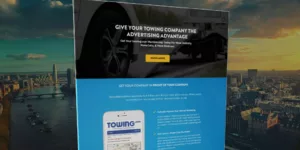If you are active in digital marketing, there is no way around landing pages. Landing pages are one-page websites with the aim to generate subscriptions, leads or sales for businesses. In contrast to websites, they serve a specific purpose and need to be highly optimised. Now, what does highly-optimised mean? Does this involve complex and sophisticated design of the page? No, in fact it is the exact opposite.
A landing page should be user-friendly and simple to achieve best results in terms of conversions. After all, conversion is all that matters on a landing page. You can have the most beautiful or contemporary design, a great offer or a technically fully-functioning page. But if these points don’t result in conversions, the effort is worthless.
So, how can we then design high-converting landing pages regardless of the industry. Here is the list of the 5 best practices, analysed by the London based Digital Design Apexure Ltd., a leading company in web & landing page design and conversion rate optimisation.
Rule No. 1: Be clear about your offer
The greatest marketing and design skills will not get a bad offer, product or service to convert. They can help you improve results, but at the end of the day, what you offer on the page must be of significant value. This seems like stating the obvious, but in reality businesses sometimes have strange expectations and think the best marketers can sell anything with a good landing page. That is wrong. Marketers and web designers need the right base to start with. Make sure you offer is something people need. Also it should be something that is easy to confirm for the user which means the threshold for converting should be as low as possible. A $500 or 1000 product has low prospects of sales because users are not ready for this pitch yet. On the other hand, a simple offer like a price comparison calculator, an ebook download or a webinar booking can work really well and brings people into your funnel.
Rule No.2: Take Your Time
When people spend money into something, they often get impatient. They want to see the immediate return and get the most for their money. Well, that is okay but it is a much more healthy approach if you accept that things take time and pressure does not help.
Make sure you test the page properly by means of A/B testing. Allow users to see different variations of the page and compare the analytics: Why are people leaving, when are they leaving, what are they interested in, which elements support conversion, etc. When you do that, you are on the path to success. A/B testing is such a simple, yet powerful technique to improve conversions in a relatively predictable way.
Rule No.3: Avoid any distractions
This rule is more important than ever. With the rise of use in mobile internet devices, people are in the need of simple, easy to consume content. The page needs to tell people in a simple way what the offer is and what they can expect. In order to ensure that your page has no unnecessary technical problems, start with the page load time. Check if your page loads seamlessly or not and make improvements as needed. Adjust user navigation and user experience so that visitors see exactly what they want to see on the page. Also, do not use too much text, too many different fonts or colours. They could dilute the brand image you create.
Rule No. 4: Use Heatmaps
As part of analysing and improving your conversions, you can use heatmaps that show where your users click and how they navigate. Furthermore, you will see when they drop off, what interests them and what doesn’t interest them. Heatmaps allow helpful insights into the design and the user experience your page creates. A good tool for this purpose is Hotjar. When used correctly, this will almost naturally improve conversions over time. Alongside A/B testing, Heatmaps are another great map of getting into the details of how your page performs.
Rule No. 5: Build the system
Landing pages are just one element in the entire online marketing ecosystem. You need much more than that. Make sure all your processes from the marketing strategy, the design of the page and the monitoring work hand in hand together. Beyond that, you should link the landing page to an entire funnel system. You need clarity how you will follow up to all the leads that come in and if there is a sales processes to contact these people afterwards. Furthermore, what happens to people who leave the landing page and drop out of your funnel. You could retarget them with new ads and link them to the page again or even present a new offer. This is the area of Remarketing/Retargeting. Combining all these elements together, you will soon have a system and an online funnel that runs smoothly and effectively.
As you can see, landing page design is complex. It does not stop at the design or the development of the page, but rather needs to be seen as an online ecosystem. If you include all of the 5 best practices presented in this article, then you should be on a good way to improving your conversions and boosting on online marketing success.








